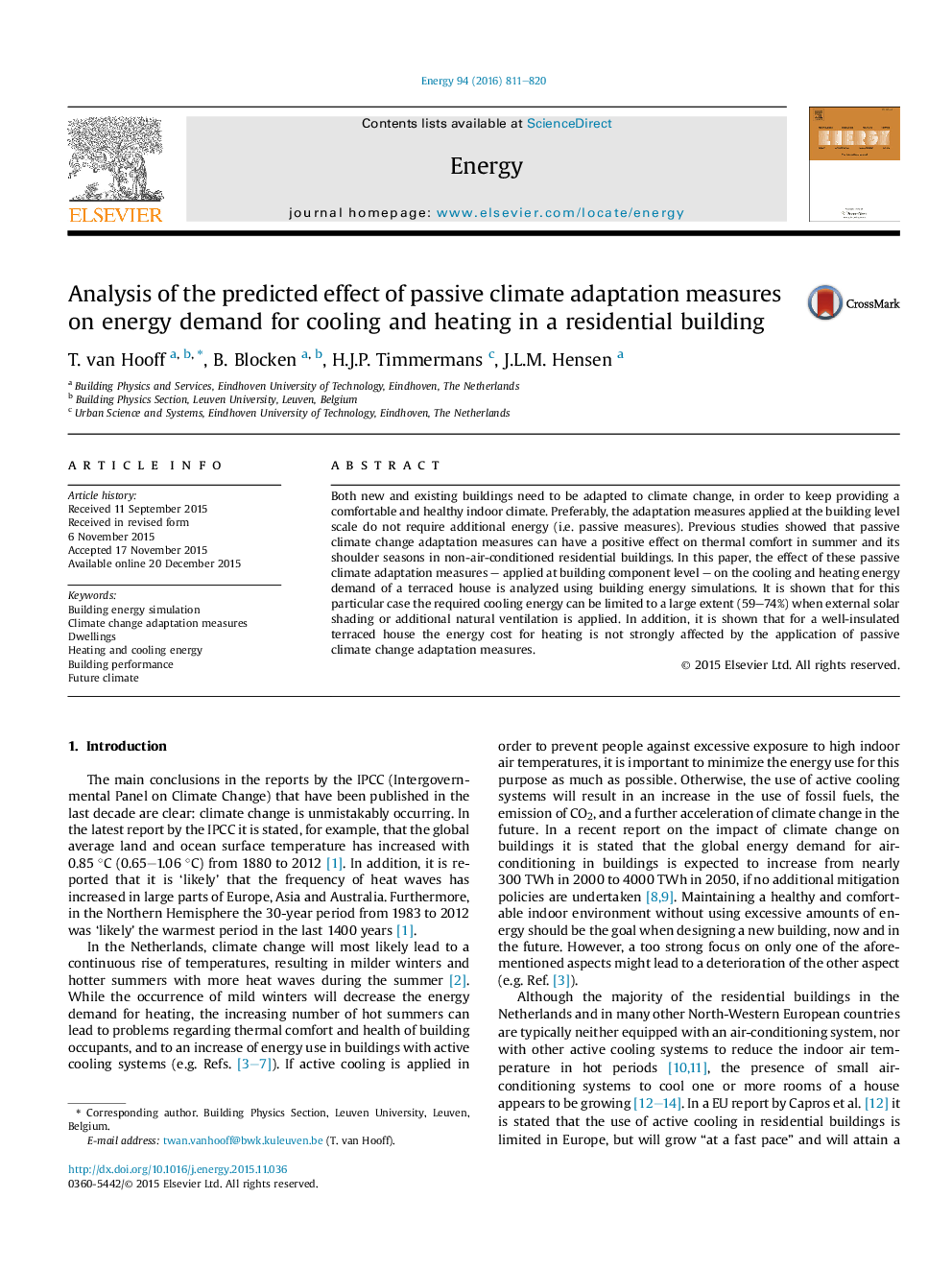| Article ID | Journal | Published Year | Pages | File Type |
|---|---|---|---|---|
| 1731234 | Energy | 2016 | 10 Pages |
•Influence of passive climate adaptation measures on cooling/heating demand.•Analysis for both an average current climate and an estimated future climate.•Building energy simulations for a terraced house with different insulation values.•The required cooling energy can be limited to a large extent by passive measures.•External solar shading and additional natural ventilation show best performance.
Both new and existing buildings need to be adapted to climate change, in order to keep providing a comfortable and healthy indoor climate. Preferably, the adaptation measures applied at the building level scale do not require additional energy (i.e. passive measures). Previous studies showed that passive climate change adaptation measures can have a positive effect on thermal comfort in summer and its shoulder seasons in non-air-conditioned residential buildings. In this paper, the effect of these passive climate adaptation measures – applied at building component level – on the cooling and heating energy demand of a terraced house is analyzed using building energy simulations. It is shown that for this particular case the required cooling energy can be limited to a large extent (59–74%) when external solar shading or additional natural ventilation is applied. In addition, it is shown that for a well-insulated terraced house the energy cost for heating is not strongly affected by the application of passive climate change adaptation measures.
